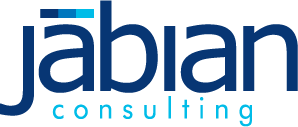Business leaders must revisit their 2020 goals and success metrics to account for the ripple effects caused by Covid-19. As you and your business continue adjusting to this new normal, you should use this time as a chance to improve goal setting processes. It is even more important to re-evaluate in the wake of disruption as many organizations already don’t adopt best practices when setting goals and tracking attainment.
Below are five best practices for you to understand when setting organizational goals:
1. Make your goals S.M.A.R.T.
Goals are more likely to be achieved when they are S.M.A.R.T. (Specific, Measurable, Attainable, Relevant, and Time-bound). Yet, many organizations fail to follow the S.M.A.R.T. framework. Business leaders should remember that goals must be specific or focused on an outcome. Anchor goals around quantifiable variables to enable tracking progress. Also, make sure goals are attainable – strive for the balance of what is achievable but still a stretch. Goals must also be relevant and connect to the holistic success of the organization. Lastly, all goals should be time-bound. Follow these principles to best define your goals, irrespective of the methodology you deploy (e.g., KPIs, OKRs, etc.).
2. Focus on What Matters
Often organizations set too many goals, preventing them from focusing on what is most critical. When setting goals, pick the four or five areas you want to focus on; then consider the three-to-five key metrics or variables beneath each of those areas. Remember, goals should cascade first from the vision and mission of the organization. Then, you can set goals that stem from and align to your organization’s strategy. This helps you connect your goals to the overarching purpose of the organization.
3. Set Stretch Goals
Organizations achieve more when they set stretch goals. They force you to push yourself and rethink how you respond to obstacles. Set goals that you’re approximately 75% confident you can achieve but understand that 75% attainment means failure is inherent. Encouraging stretch goals will help drive innovation and creativity when applied correctly. As you set aggressive goals, avoid the pitfalls in performance management. You must review individual’s performance based on 75% goal attainment being a success. You cannot penalize someone for not achieving 100% of goals they set as this will contradict a culture that fosters aggressive goal-setting and is receptive to failure.
4. Select the right metrics
Many organizations set goals with metrics that don’t align to organizational success. Be aware that this can manifest itself in many ways, including:
- Organizations use metrics based on unreliable or faulty data.
- Metrics were not agreed upon or discussed at the leadership level. Leaders should recognize the goal’s importance and its correlation with organizational success.
- Leaders select the wrong metric in the first place. Many times, organizations focus too much on financial metrics at the cost of more critical metrics (e.g. Net Promoter Score).
In the end, you must take steps to ensure you select goals that depict the success of the organization.
5. Review Performance on a Consistent Basis
Achieving your goals requires regular tracking, on a near weekly if not daily basis. In addition, organizations need to have defined intervals where teams review goals and are held accountable for attainment. By reviewing organizational performance on a consistent basis, organizations and leaders can solve problems and adjust in real-time to focus on what’s most important.
Now more than ever, it is critical to align your organization on what is most important. With the uncertainty of tomorrow, you must take added steps to understand and track what is core to business success. It is important to set goals that align with the organization’s needs and review your teams’ performance regularly.
If you and your business are looking to plan for post-COVID-19 recovery, remember Jabian can help you Plan Ahead.
Source:
